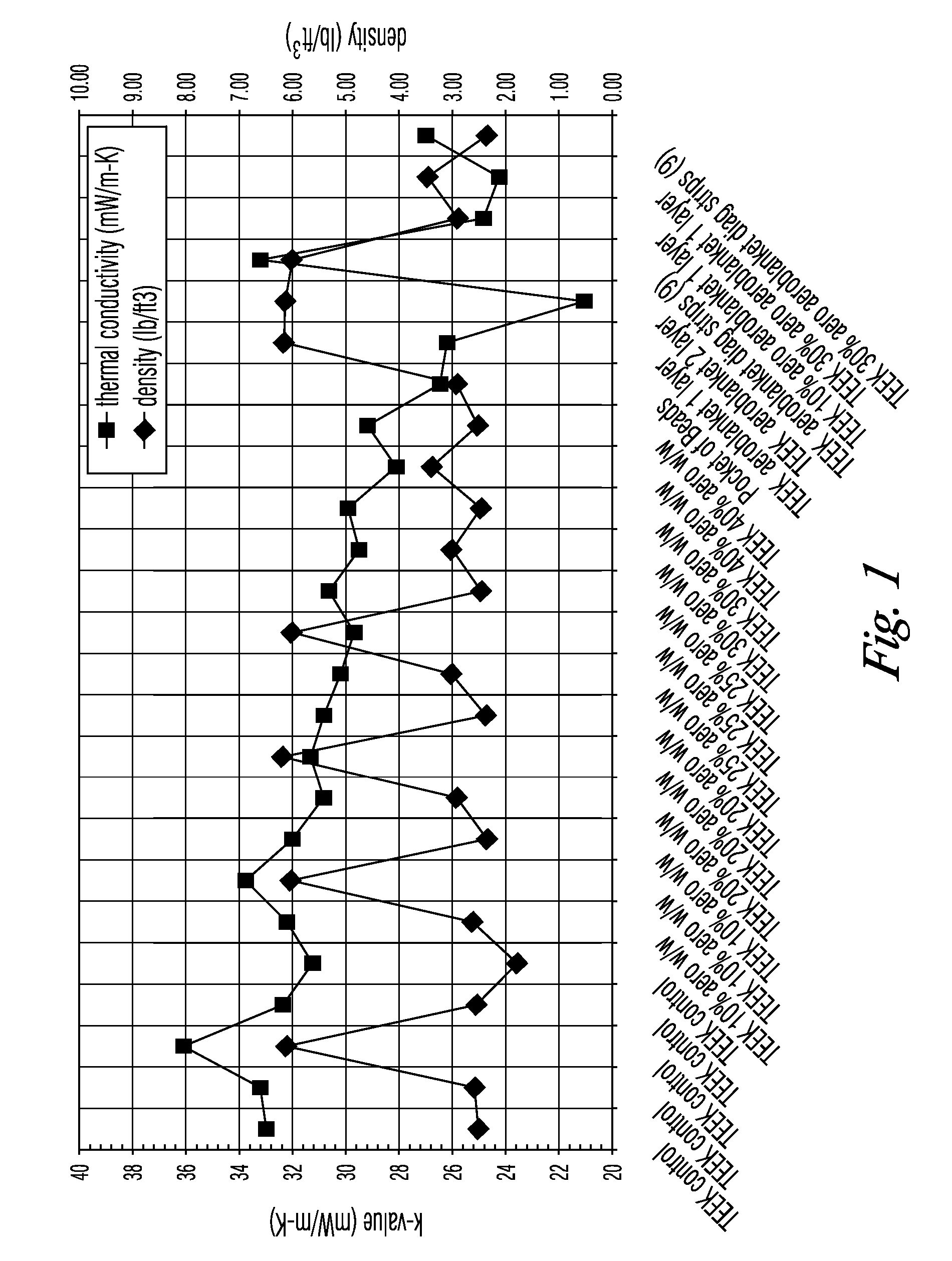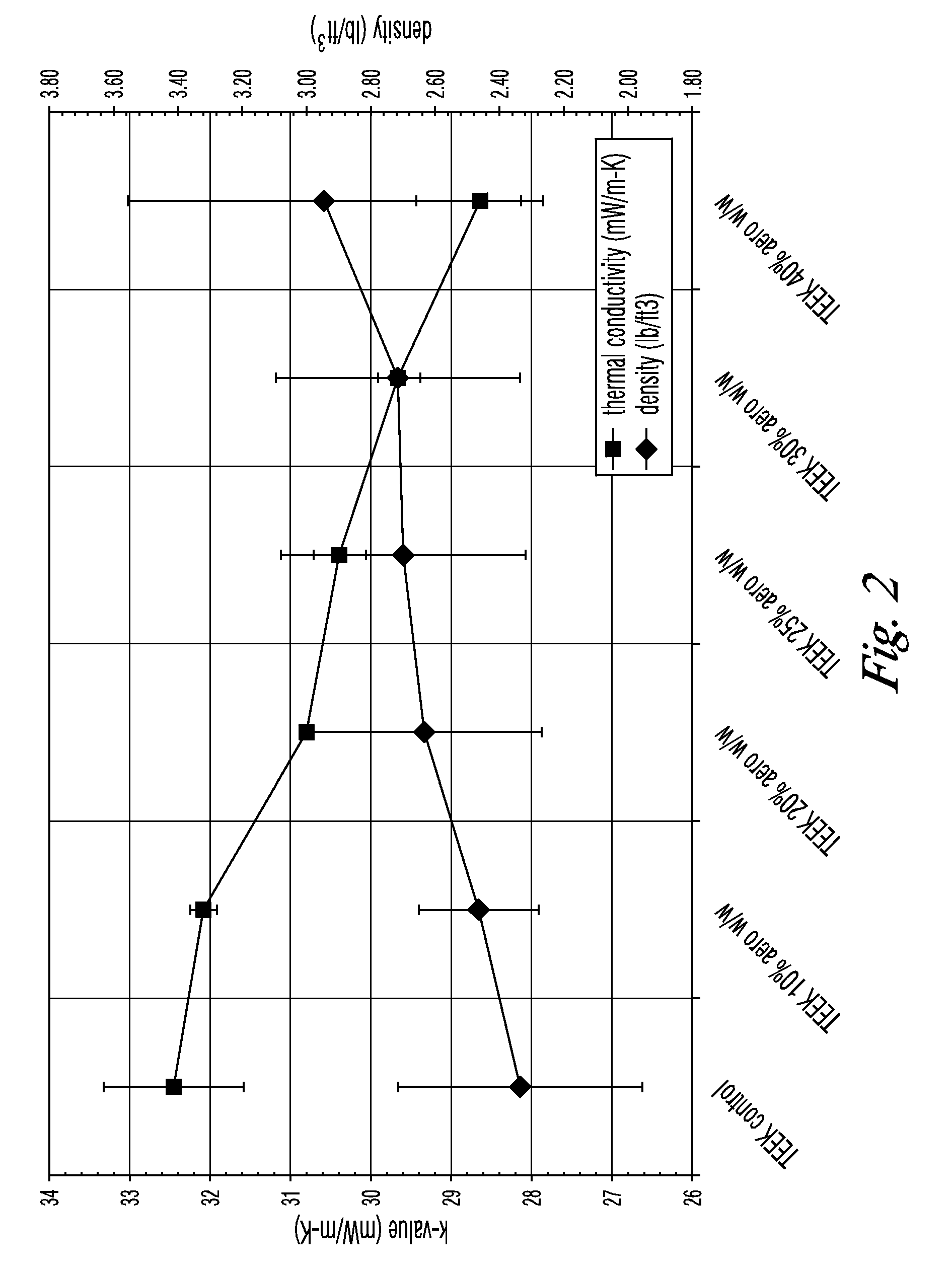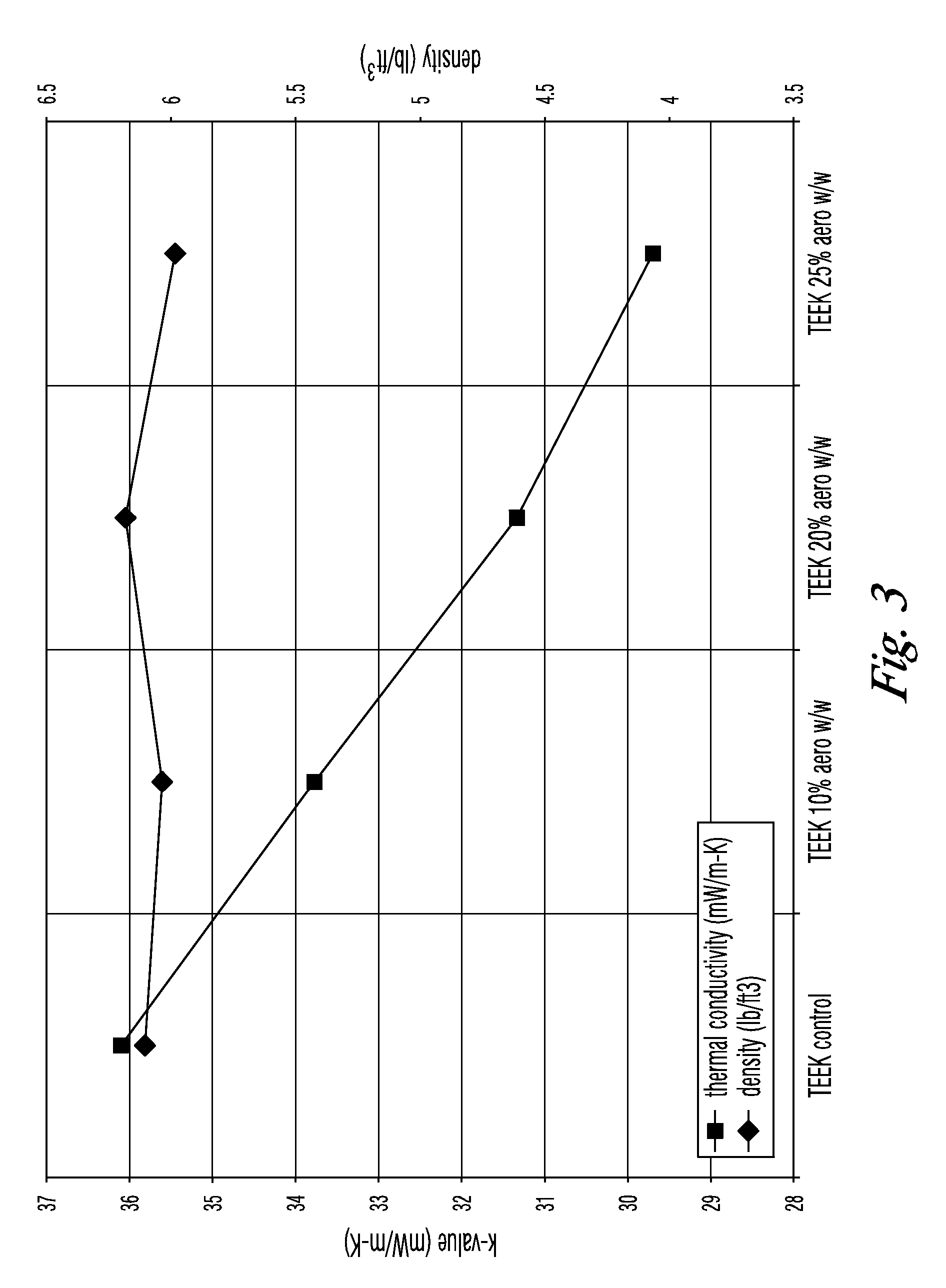Foam/Aerogel Composite Materials for Thermal and Acoustic Insulation and Cryogen Storage
- Summary
- Abstract
- Description
- Claims
- Application Information
AI Technical Summary
Benefits of technology
Problems solved by technology
Method used
Image
Examples
example 1
TEEK Foam-Aerogel Bead Composite
[0102] Seven grams of NANOGEL aerogel beads (Cabot Corporation) (nominal 1 mm beads) and 28 grams of TEEK friable balloons were placed into a container and shaken continuously for 1 minute until a homogenous mixture was obtained. The entire contents of the container, 35 grams of the mixture containing 20% aerogel beads and 80% TEEK friable balloons, were transferred to a 0.1524 meter by 0.1524 meter by 0.0318 meter stainless steel mold and covered with a porous graphite plate. The mold was then placed in a convection oven and the temperature was raised to 200° C. and held for 2 hours. Once done, the temperature was reduced to ambient and the mold was removed from the oven. The resultant foam composite weighed 30.56 grams with a density of 0.04138 g / cm3.
example 2
TEEK with Aerogel Blanket Layer
[0103] A single piece of SPACELOFT aerogel blanket (Aspen Aerogel) (6 mm thick) was cut into a 0.1016 meter square. Thirty grams of TEEK friable balloons were weighed out. Fifteen grams of the TEEK friable balloons were poured into the bottom of a 0.1524 meter by 0.1524 meter by 0.0318 meter stainless steel mold and was shaken to disburse the balloons evenly across the mold surface. The aerogel blanket was then placed in the center of the mold and the remaining 15 grams of TEEK friable balloons were poured over the blanket. A porous graphite plate was placed over the mold and then the entire mold assembly was placed into a convection oven. The temperature was raised to 200° C. and held for 2 hours. Once done, the temperature was reduced to ambient and the mold was removed from the oven. The resultant foam composite weighed 30.41 grams with a density of 0.0412 g / cm3.
example 3
TEEK with Diagonal Strips of Aerogel Blanket
[0104] SPACELOFT aerogel blanket was cut into strips 14 cm by 3 cm and inserted into a mold between layers of TEEK friable balloons at a 45 degree angle in a square mold as in Example 2. The strips of SPACELOFT were evenly spaced with some space between strips.
PUM
| Property | Measurement | Unit |
|---|---|---|
| Temperature | aaaaa | aaaaa |
| Temperature | aaaaa | aaaaa |
| Temperature | aaaaa | aaaaa |
Abstract
Description
Claims
Application Information
 Login to View More
Login to View More - R&D
- Intellectual Property
- Life Sciences
- Materials
- Tech Scout
- Unparalleled Data Quality
- Higher Quality Content
- 60% Fewer Hallucinations
Browse by: Latest US Patents, China's latest patents, Technical Efficacy Thesaurus, Application Domain, Technology Topic, Popular Technical Reports.
© 2025 PatSnap. All rights reserved.Legal|Privacy policy|Modern Slavery Act Transparency Statement|Sitemap|About US| Contact US: help@patsnap.com



